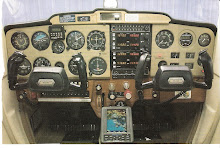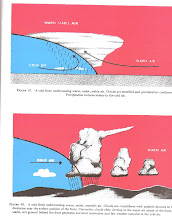Hi Readers: Before we get started today - Did you know that the Morse Code was considered the first digital code and was the forerunner of the ASCII - the American Standard Code for Information Exchange based on the English alphabet. ASCII codes represent text in computers, communications equipment, and other devices that work with text. Look at your computer keyboard and you'll see the code.
Now continuing - Notices To Airmen are time-critical aeronautical information of a temporary nature or not sufficiently known in advance to permit publication on aeronautical charts. Such information could affect a pilot's decision to conduct or abort a flight. Look at any airport or facility on a Sectional chart (I'm sure you can find one) - this is the type of information that could change from day to day that might affect your flight plans. It could be an airport or runway closure; a change in the status of a navigational aid, or instrument landing system, or radar service, or other information essential to planned en route, terminal, or landing operations.
NOTAM information is transmitted throughout the Air Traffic and FSS (Flight Service System) network, using standard contractions to reduce transmission times. In Chapter 5 of the FARs, Air Traffic Procedures - Table 5-1-1-, you'll find the list of contractions used in the NOTAMS. There are some 288 contractions, some readily identifiable by glance, some not. There are three categories of NOTAMS, D - for Distant, L - for Local, and FDC - for Flight Data Center information. The categories are in detail with notes. Difficult reading - yes. However, I recommend that all pilots take the time to read and digest Chapter 5 at their leisure, prior to making x-c flights, particularly instrument flights, and get a good understanding of how the system works.
NOTAM D information is disseminated for all navigational facilities that are part of the National Airspace System. The complete file of all information is maintained in a computer database at the Weather Message Switching Center located in Atlanta, GA. The categories of information are distributed automatically via Service A Telecommunications Systems. FSS have access to the entire database.
To get NOTAM D en route and destination information you must contact your FSS and request all flight plan information needed from the the available air traffic facilities.
NOTAM L is basically local airport information, such as taxiway closures, personnel and equipment near the runways, airport lighting aids, et cetera, which you can get by contacting Ground Control or the local Tower.
The FDC (Flight Data Center) NOTAMS contain regulatory information such as amendments to instrument approach procedures, and other current information which are not yet published on charts. These NOTAMS are distributed from the national FDC in Washington D.C. and are kept on the files of FSS until published or cancelled.
The currency of a NOTAM is very important, and the pilot should keep abreast of the en route and destination changes by contacting the FSS's along the way. Once NOTAM information is published, the information is no longer provided to the FSSs, particularly for weather briefings, unless requested by the pilot.
In summary, pilots should be concerned with the D and L NOTAMS for x-c flight, paying strict attention to items pertaining to their flight plans, prior to filing those plans. In fact, there are any number of NOTAM contractions of the total that might apply, such as en route advisory service changes, minimum en route altitudes, radar coverages, ATIS services, airport lighting, air traffic control changes, adverse weather changes, ad infinitum.
As a pilot, I've always thought the NOTAM system was unduly complicated and cumbersome. The pilot has enough to do with just the flight planning; yet he must keep track of what is current and any changes that have been made during his en route flight and on to his destination. The system places these responsibilities on the pilot alone. However, I'll be the first person to say that I don't have a better plan. Maybe you do.
I must again emphasize the importance of NOTAM information for the pilot's flight planning, and, of course, the importance of filing a flight plan. And it's good to remember that the only information transmitted to the destination FSS will be your aircraft ID, type, destination, and estimated time en route. That means that all other information required for the flight must be obtained and processed by the pilot-in-command. The pilot has always been considered as responsible for the safety of the flight. And as a final note, he must not forget to close his flight plan. RS.
Saturday, August 4, 2007
NOTAMS
Labels:
airports,
destination,
en route,
FARs,
Flight Planning,
NOTAM,
NOTAM database,
PIC,
sectional chart
Subscribe to:
Post Comments (Atom)











No comments:
Post a Comment